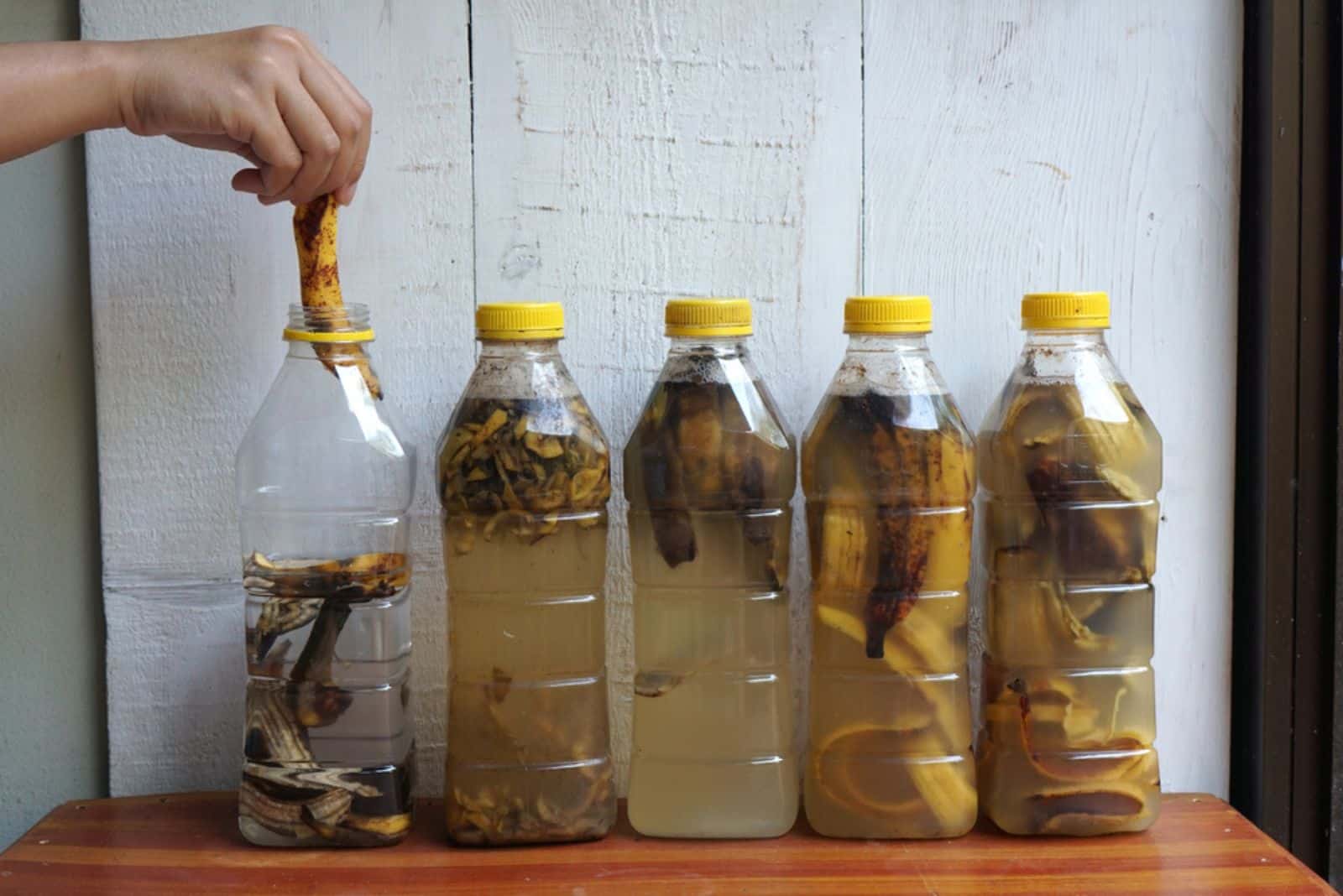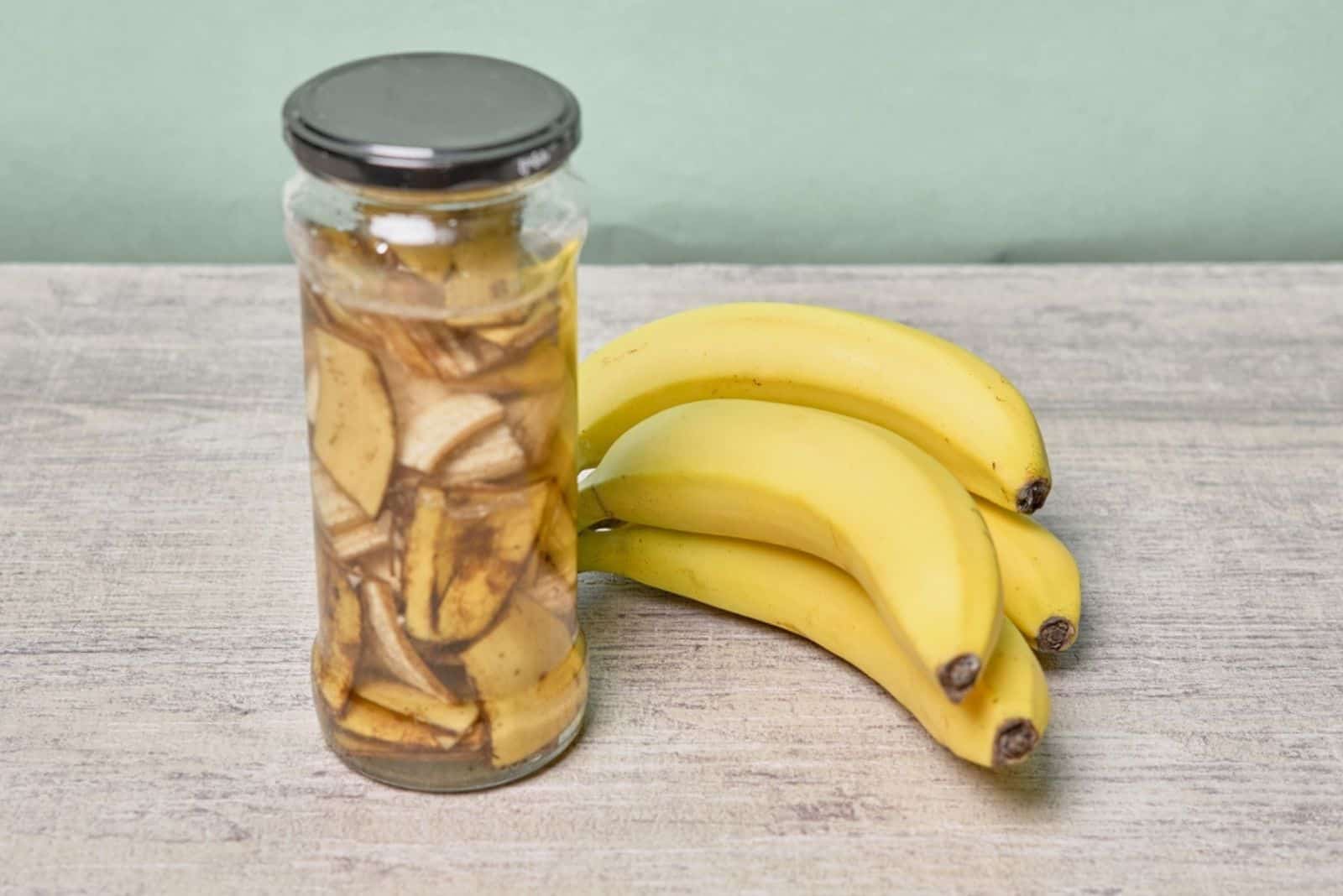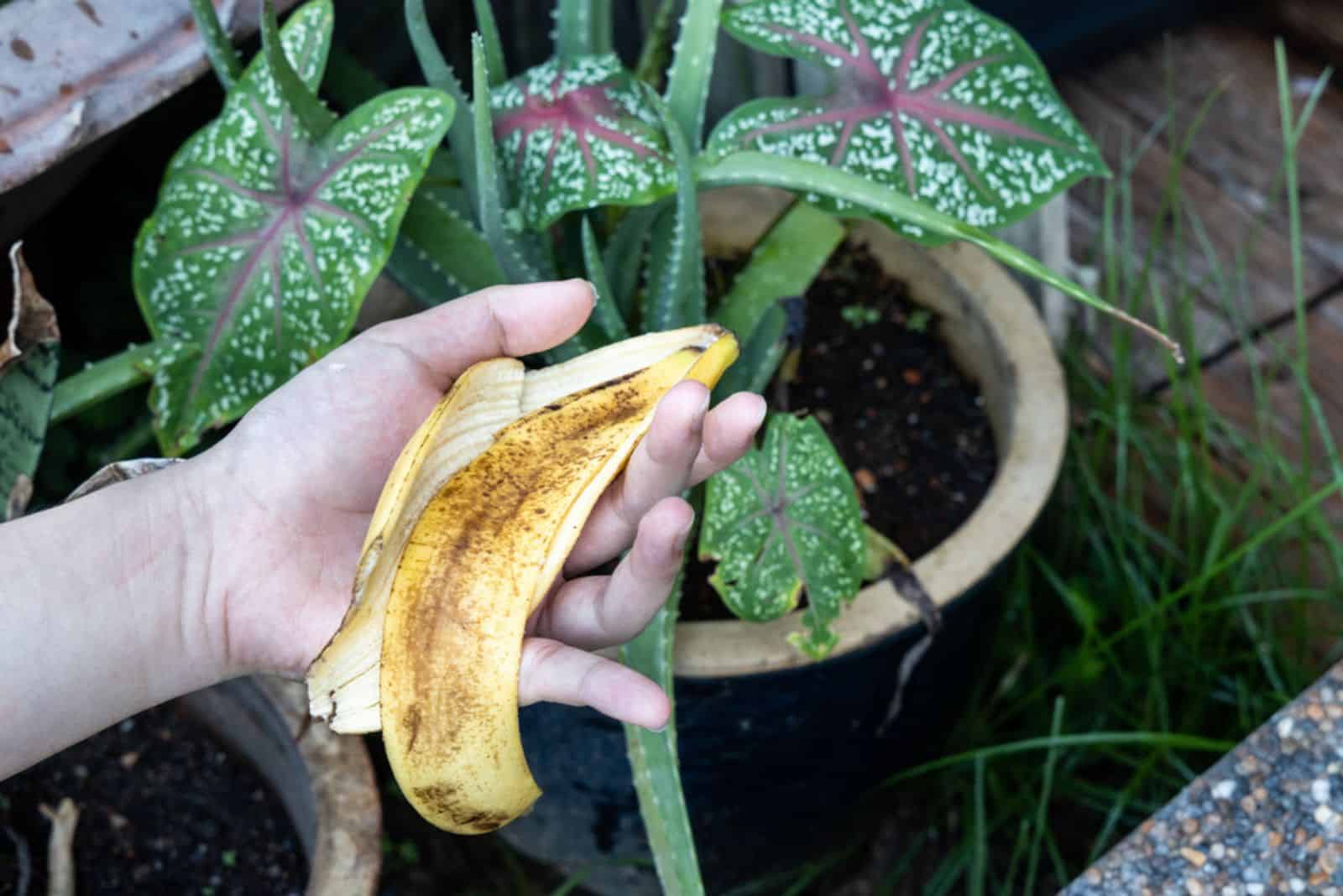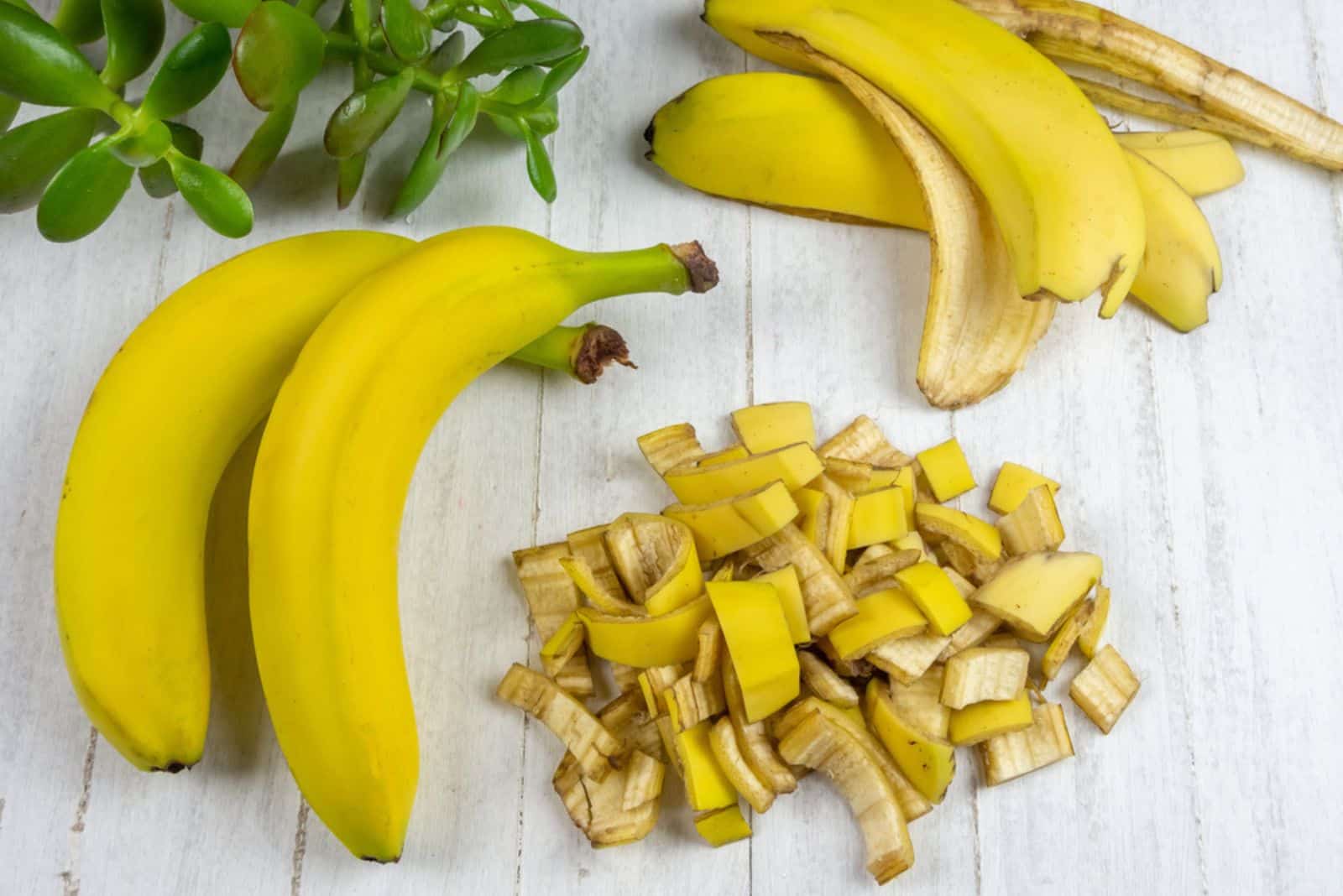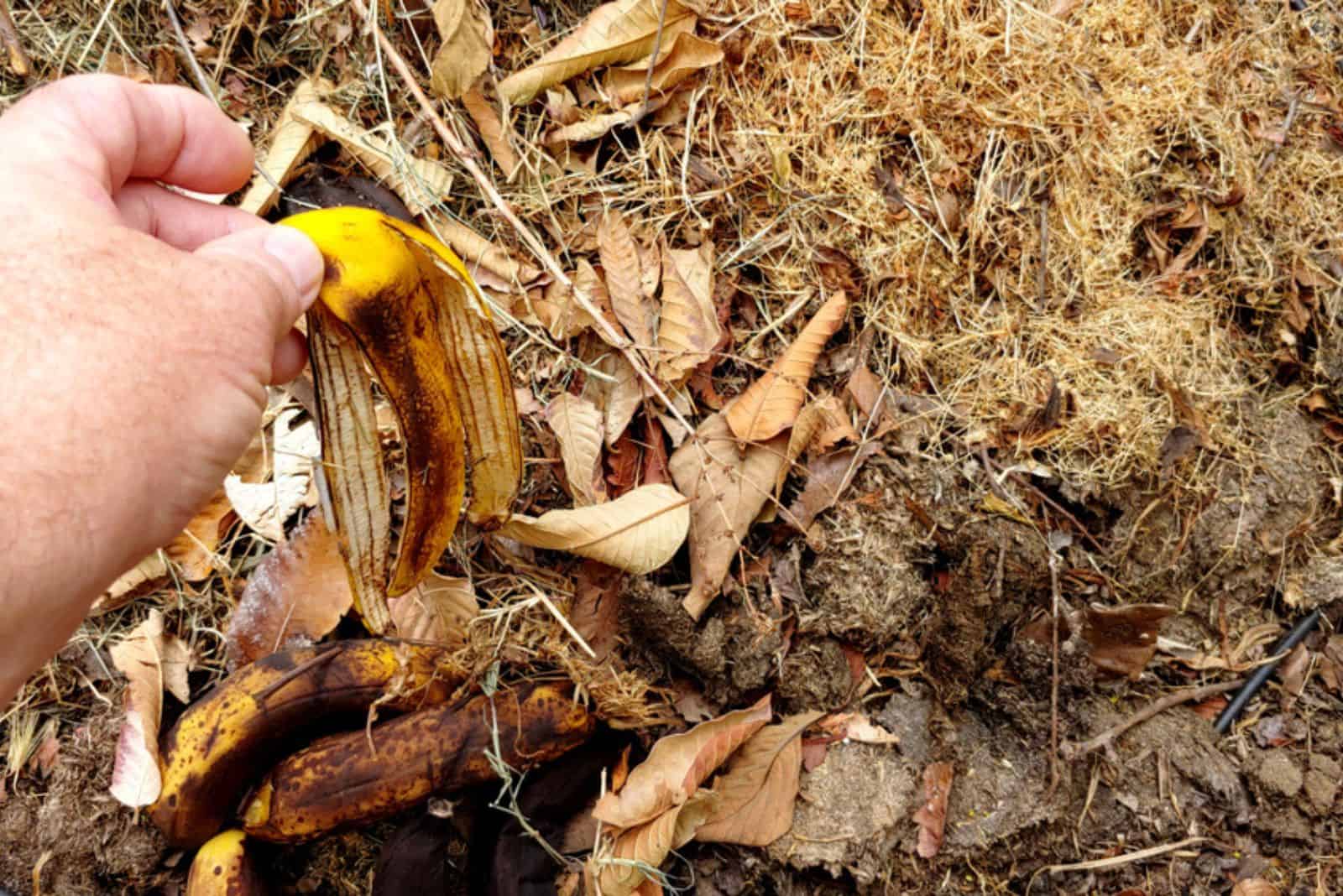Once you are finished eating a banana, you usually throw away the peel. But did you know that banana peel has a lot of nutrients that can boost plant growth?
That’s right, banana peel contains nutrients crucial for plant development, such as potassium, calcium, and phosphorus. If you are already familiar with these, then you know that they are found in lots of different fertilizers.
So, instead of throwing away your banana peel, use it to make an organic fertilizer that your plant will absolutely love!
Let’s see what the deal is.
What Is A Banana Peel Fertilizer?
Banana peel fertilizer is a type of organic fertilizer made out of banana peels. Banana peels are rich in nutrients, especially potassium. Banana peels are like potassium gold mines!
Potassium in plants is associated with the movement of water, carbohydrates, and nutrients in their tissues. It ultimately leads to energy production as it affects the enzyme involved in the ATP pathway [1].
Calcium, manganese, sulfur, and magnesium can also be found among other nutrients. These are essential elements for maintaining the health of all plants, whether it’s through photosynthesis, the production of chlorophyll, or the control of water flow within cells.
It is important to note that banana peel doesn’t contain nitrogen. Therefore, this organic fertilizer can be used for plants that require low nitrogen, such as tomatoes, radishes, peppers, and cucumbers.
Make Your Own Banana Peel Fertilizer
Making your own banana peel fertilizer is pretty easy. Decide how much fertilizer you want to make first, then add water. To prevent mold growth, make sure the water level is just over the bananas.
The next step is to expose this solution to direct sunshine for one to two weeks before using it as a fertilizer.
You can also create a slow-release fertilizer, but you need to make sure the peels are completely dehydrated for this procedure. To do this, simply leave them outside in the sunshine and open air.
Banana peels should be ground up and added to the soil once they are completely black and crispy.
Tips For Using Banana Peel Fertilizer Properly
When I started using this homemade fertilizer for my jade plants, I honestly didn’t notice any difference. After a while, I figured out that I’d been using it completely wrong!
Instead of using it once a week, I was only using it every other week. Although there were some improvements, it was hardly noticeable, so water your plants with diluted fertilizer once a week and wait patiently.
If you have dried banana peels, you can grind them into a powder, sprinkle it around the base of your plants, and then water the area well.
Alternatively, you can bury the banana peel pieces directly into the soil near your plants.
When To Use Banana Peel Fertilizer
If you are dealing with potassium deficiency, then making banana peel fertilizer can help solve all your problems!
Pale yellow leaves, stunted growth, poor water uptake, and undeveloped roots are signs of potassium deficiency.
If some veggies aren’t ripening properly, it can also be due to lack of potassium. However, it’s also important not to overdo it.
Too much potassium can actually harm your plants, so stick to using banana peel fertilizer once every few weeks and monitor your plants for any signs of nutrient burn or damage.
Other Uses For Banana Peel In Gardening
Banana peels have multiple uses. Not only can they be used as fertilizer, but they can also be used as seed starters, pest control, mulch, compost, and many other things!
1. Make Banana Peel Vinegar
When fermented, banana peel creates an acidic, vinegar-like solution that can be used for acid-loving plants such as blueberries or hydrangeas.
Cut the peel into small pieces and put them in a jar. Then add water and cover the jar with a double-layered cheesecloth. Put it somewhere nice and warm.
After a week, discard the peels and cover the jar with cheesecloth. Then let the vinegar ferment for another month. Dilute this solution with water before giving it to plants that love acidity.
2. Use Peels As Seed Starters
If you are having trouble germinating seeds, save some banana peels before planting. They can give your seeds that extra boost for germination!
Use the inside of a banana peel to start seeds. Place the seed in the peel and bury it in the soil. As the peel decomposes, it will provide nutrients to the seed.
3. Free Pest Control
Pest infestations are the worst. We have to do everything in our power to prevent them from harming our precious plants.
Some gardeners believe that placing banana peels around the base of plants can deter aphids and other pests. You can also combine vinegar and banana peels to make a bug trap. Mix a little apple cider vinegar with a few teaspoons of finely chopped banana peel.
To allow the bugs to enter but not escape, place a funnel inside the container. Repeat the process after 48 hours and discard.
4. Mulch Your Banana Peels
Mulch has numerous benefits – from suppressing weed growth to providing your plants with the extra nutrients they need for growth and development. So, instead of throwing them away, use banana peels for mulching.
You can chop up banana peels and use them as a natural mulch around your plants. They will break down slowly, providing a slow-release source of nutrients.
5. Clean The Leaves
Once you notice that dust has formed a thick layer on your plants’ leaves, you can use banana peel instead of a dusting cloth to clean your plants.
Use the inside of a banana peel for cleaning. This will make the leaves nice and shiny!
6. Add Them To Compost
Like any other kitchen waste, banana peel can also be used for composting. These are excellent additions to compost piles since they are rich in nutrients.
As they decompose, they will slowly release valuable nutrients to your compost.
7. Boost Your Soil During Winter
When the growing season is over, your soil’s nutrient content will be depleted. In order to replenish nutrients, bury some banana peels all over your garden. They will decompose over winter and release nutrients necessary for new growth.
I hope you enjoyed this article.
Until next time!
References
1. Potassium for crop production. University of Minnesota

